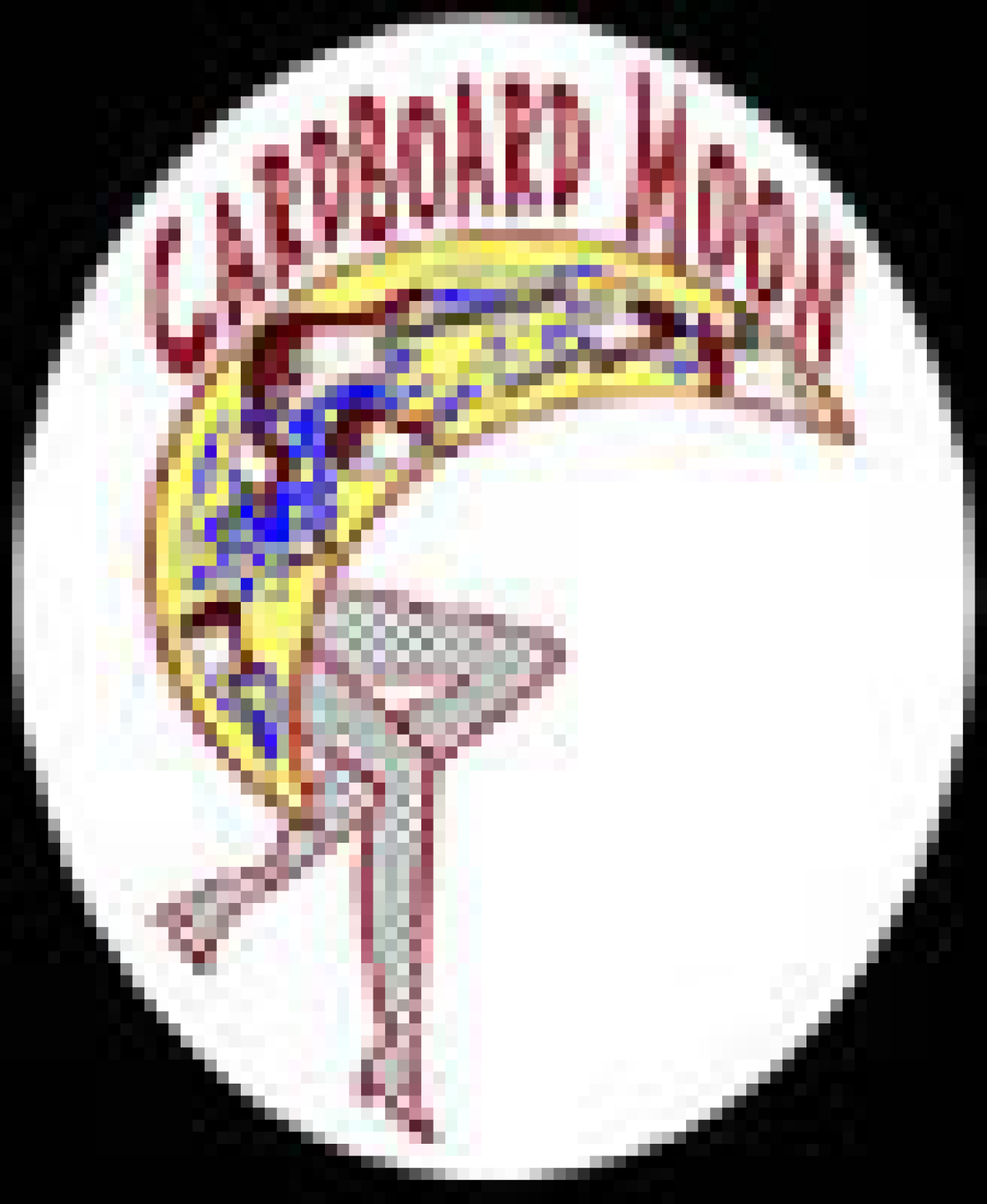Cardboard Moon

Just when you thought there weren’t any new genres left to be invented, someone went and got the idea to make a commedia dell’arte rock musical. In Cardboard Moon Justine Lambert synthesizes these two forms, creating a musical within the general structure of the commedia form. It’s an odd combination that sometimes works wonderfully, and sometimes doesn’t.
In Lambert’s story, a young woman named Columbine (Cynthia Pierce) is living in a surreal world where everyone is happy and free; the problem is that she can’t seem to let herself enjoy it. When neither her girlfriend, Pierrot (Stephanie Lippman), nor her newfound lover, Harlequin (Elan Zafir), can convince Columbine that the bright moon shining above the stage is real, they bring in a psychiatrist to cure her. Failing that, they take her to Paris, the city of dreams and romance. But Columbine remains unconvinced. In fact, it is in Paris that she ruins her companions’ happy fantasy by proving that their beloved moon is, indeed, a cardboard one.
Commedia dell’arte is associated with music and whimsy, as is musical theatre, and the characters–all classic, stock types from the commedia tradition–lend themselves well to song. But the main problem is that, from the very beginning, we’re offered only this conflict between Columbine and the others in her world; the entire first act is spent with each trying to convince the other of what to believe, and this can get a little tedious. Columbine eventually proves her point, effectively throwing everyone into reality. However, she comes to regret this when, in the second act, she realizes that the real world expects her to work, behave appropriately in public, and stay faithful to only one partner.
In this real world, the commedia aspect is ostensibly dropped, as the actors throw off their clownish outfits and make-up and start behaving like modern people. But the show’s music and choreography, which has them moving in puppet-like fashion, reminds us of their first-act counterparts, so that the main characters function as contemporized versions of themselves. In structuring the show this way, Lambert draws nice parallels between fantasy and reality, the past and the present, and new and old forms of theater.
While Lambert is the storyteller here, having written and directed Cardboard Moon, the songs are the work of Kenny Nowell. This fellow serves as the show’s musical director and one-man band, playing guitar and synths. His tunes are catchy, with some very nice harmonies, and though the lyrics aren’t as good, they are generally on a par with Lambert’s script. Stand-outs include a beautiful ensemble number about Paris and a song about how “work will set you free,” sung with gusto by Nyjah Moore Westbrooks. (Unfortunately, the program doesn’t include song titles.)
Wendy Seyb’s choreography is fantastic. The movements, alternately fluid and frenetic, are beautifully executed by the cast; they meld seamlessly with the music and add a terrific energy to the show.
Though Cardboard Moon is far from perfect, it has a lot going for it. The show is quite ambitious, not only in trying to break ground stylistically, but also in presenting some big ideas about the nature of fantasy and reality. It doesn’t delve as deeply as it could into the questions it raises; but, then again, this is a fairy tale, and too much philosophy might kill the spirit of the piece. There does need to be better flow between the musical numbers and the scenes, and the show could probably stand some trimming. Still, Cardboard Moon is a musical that might well appeal to anyone interested in discovering a brand new genre of theater.











